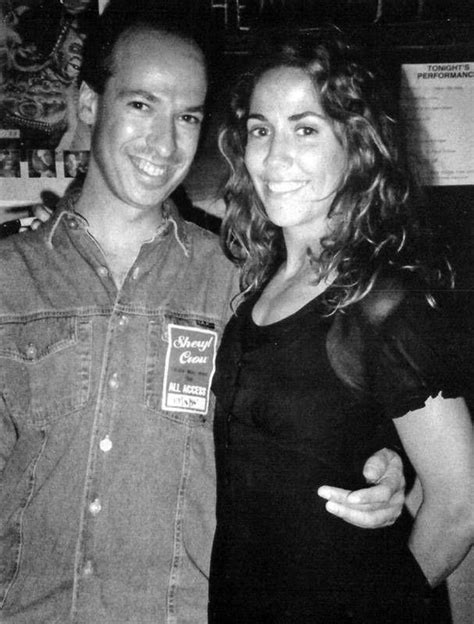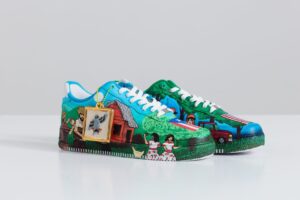Sheryl Crow’s 1994 hit “All I Wanna Do” is one of those rare songs that feels like the perfect distillation of a carefree summer afternoon, capturing the simple pleasures of an idle moment. But beyond its breezy melody and catchy refrain lies an interesting story of artistic transformation and relative relay upon one connects th song to a little-known poem by Wyn Cooper titled Fun. Creatively, the narrative intertwines two distinct art forms—music and poetry—showcasing how one can inspire and elevate the other in unexpected and profound ways.
The Country of Here Below and Wyn Cooper’s Poetic Vision
Wyn Cooper’s Fun was first published in his 1987 poetry collection The Country of Here Below. The collection, filled with sharp imagery and accessible narratives, found moderate success in literary circles but remained relatively obscure. Fun tells the story of a young man spending his time in a bar with friends, reveling in the moment and eschewing the pressures of responsibility. Its vivid yet relaxed tone, coupled with its exploration of life’s simpler joys, struck a chord with those who read it.
At its heart, Fun is a meditation on escapism. It encapsulates the universal yearning for freedom from life’s constraints, capturing the small but significant ways people find happiness in the everyday. Through its conversational tone and relatable imagery, the poem creates an emotional resonance that would later translate seamlessly into a chart-topping song.
Tuesday Night Music Club and the Search for Inspiration
Fast forward to the early 1990s. Sheryl Crow, then a backup singer seeking to establish herself as a solo artist, was working on her debut album, Tuesday Night Music Club. The album was a mixed effort involving a group of musicians and songwriters who met regularly to create and workshop ideas. During this process, David Baerwald, one of Crow’s collaborators, stumbled upon Cooper’s Fun in a bookstore. Intrigued by the poem’s tone and narrative, he brought it to the group’s attention.
The songwriters, including Crow, Kevin Gilbert, Bill Bottrell, and Baerwald, recognized the poem’s potential as a lyrical foundation for a song. Cooper’s verses, with their conversational cadence and vivid imagery, lent themselves naturally to adaptation. The group decided to incorporate the poem into their songwriting process, drawing inspiration from its themes and even borrowing specific lines.
Crossover From Poem to Song
Transforming Fun into “All I Wanna Do” required both fidelity to the source material and creative reinterpretation. The songwriters retained the poem’s central theme—the pursuit of leisure and joy—but expanded it to fit the structure and tone of a pop song. Lines like “This ain’t no disco, this ain’t no country club, either” echo the casual irreverence of Cooper’s original text, while the overall narrative of hanging out in a bar and avoiding responsibility mirrors the poem’s essence.
Musically, the song captures the poem’s laid-back energy through its mellow groove and playful instrumentation. The arrangement, characterized by its jangly guitars and shuffling beat, complements the lyrics’ easygoing mood, creating a sonic landscape that feels effortlessly cheerful. Crow’s warm, conversational vocal delivery further enhances this effect, making listeners feel as though they’re part of the barroom scene described in the lyrics.
Themes of Escapism and Everyday Joy
At its core, “All I Wanna Do” is a celebration of living in the moment, echoing the themes that make Fun so resonant. The song’s narrator expresses a desire to escape from the demands of everyday life and revel in the simplicity of a carefree afternoon. This theme of escapism, though often viewed as frivolous, carries a deeper significance: it reflects the universal human need for respite and connection.
In both the poem and the song, the bar becomes a symbolic space of freedom and camaraderie. It’s a place where time slows down, responsibilities fade away, and people come together to enjoy life’s simple pleasures. This portrayal of the bar as a haven of joy and community underscores the enduring appeal of the poem’s and song’s shared narrative.
Artistic Venture Across Mediums
The story of Fun and “All I Wanna Do” highlights the power of artistic collaboration and the ways in which different art forms can influence one another. By adapting Cooper’s poem, Crow and her collaborators demonstrated how poetry can serve as a wellspring of inspiration for music. The process of adaptation required both fidelity to the source material and the creative flexibility to reimagine it in a new context, resulting in a song that feels fresh yet rooted in the original poem’s spirit.
This interplay between poetry and music also speaks to the transformative power of art. In its original form, Fun was a modestly known poem appreciated within literary circles. Through its adaptation into a hit song, it reached a far wider audience, introducing countless listeners to Cooper’s work and sparking new interest in poetry as a whole. This crossover between mediums showcases how art can transcend boundaries and resonate with people in unexpected ways.
Impression
Upon its release, “All I Wanna Do” became an instant hit, topping charts worldwide and earning Crow her first Grammy Award for Record of the Year in 1995. The song’s success brought newfound attention to Fun and its author, Wyn Cooper. As the story behind the song became widely known, interest in Cooper’s poetry surged, leading to increased sales of The Country of Here Below and a renewed appreciation for the poem’s literary merit.
For Cooper, the song’s success represented an unexpected but welcome opportunity to share his work with a broader audience. In interviews, he has expressed gratitude for the recognition, noting how the song introduced his poetry to people who might not otherwise have encountered it. This intersection of poetry and popular culture underscores the potential for art to connect with diverse audiences in meaningful ways.
The Legacy of “All I Wanna Do” and Its Connection to Poetry
Today, “All I Wanna Do” remains one of Sheryl Crow’s most iconic songs, beloved for its catchy melody and relatable themes. Its connection to Fun adds an intriguing layer to its legacy, reminding listeners of the poem’s role in shaping the song’s narrative and tone. The story of how a relatively obscure poem became the foundation for a chart-topping hit serves as a testament to the enduring power of words and the importance of collaboration in the creative process.
This mixology also highlights the ways in which art evolves and takes on new forms. By adapting Fun into “All I Wanna Do,” Crow and her connections can demonstrate how poetry can discover new life and relevance in the context of popular music. This process of transformation enriches both the original work and its adaptation, creating a dialogue between mediums that enhances our appreciation of both.
The story of Sheryl Crow’s “All I Wanna Do” and Wyn Cooper’s Fun is a compelling example of how art can inspire, transform, and connect. This intersection of poetry and music reminds us of the boundless possibilities of creative expression and enlightenment of art in all its forms.
In the end, both the song and the poem celebrate the same universal truth: life’s greatest joys often lie in the simplest moments. Whether through the written word or a catchy melody, this message continues to resonate, reminding us to slow down, savor the moment, and, above all, have some fun.
No comments yet.








